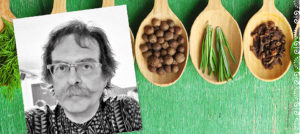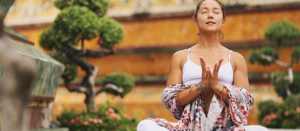Aromatherapy makes use of highly concentrated oil extracts of flowers, fruits, herbs, grasses and trees. These essential oils are the vital life force of plants. It is believed that the inhalation of essential oils stimulates the part of the brain connected to smell – the olfactory system; a signal is sent to the limbic system of the brain that controls emotions and retrieves learned memories. This causes chemicals to be released which make the person feel relaxed, calm, or even stimulated. Aroma also provokes the production of hormones that control physical and psychological functions. Aroma therapy could be either through aerial diffusion, direct inhalation or topical application.
When you apply essential oils to your skin, in addition to the cosmetic benefit, the oil’s tiny molecules enter your pores and make their way into your bloodstream to travel through the body’s entire circulatory system including your lymph. The vital life’s energy contained in the oils positively effects all systems of your body.
Ayurveda embraces the use of aromatherapy as a valuable way to balance the three Doshas of Vata, Pitta and Kapha. According to Ayurveda, good health comes from physiological balance. All of us are made up of the same five fundamental elements that the universe is made of: ether, air, fire, water and earth. Essential oils help create balance through the sense of smell, and many offer targeted benefit for different sub-doshas, subcategories of the three main doshas.
Aromas for each dosha
While conventional “aromachologists” prescribe the same therapeutic scent for everyone, ayurvedic physicians take a person’s prakriti (constitution) into account and tailor aromatherapy to their individual needs.
In Ayurveda, it is believed that same dosha activity increase that very same dosha. Conversely, the very opposite energy decreases that particular dosha. When the particular dosha is in imbalance, it is at advantage to add something “opposite”.
Being wind and ether, Vata is cold and dry. To reduce too much Vata, it is best to use the oil that is heating and moisturizing. Pitta is the combination of fire and water; therefore, it is hot and wet. To reduce too much Pitta, it is best to use the essential oils that are cooling and drying. Kapha is the combination of water and earth; therefore it is cold and wet. To reduce too much Kapha, it is best to use the essential oils that are heating and drying.
This method of addition/reduction of dosha through essential oil can be a tool to use for blending the essential oils. However, as everything is in moderate balance, it does not mean that certain essential oils cannot be used for a particular dosha. For example, lavender, which is cooling/moisturizing, can be used with other heating oils as a supporting oil if it serves the purpose, or to balance the overall synergy.
Oils for Vata
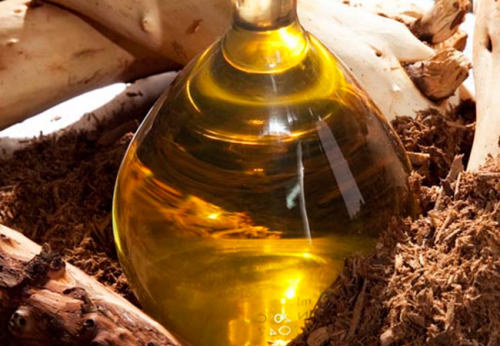
- Oils like Bergamont, lemon, orange, ginger, sandalwood, cinnamon, rosewood, turmeric, basil, eucalyptus, frankincence, cajeput, angelica, vetivert, anise, camphor, amber, angelica, anise, basil, cardamom, chamomile, cinnamon, clary sage, coriander, eucalyptus, frankincense, geranium, ginger, jasmine, jatamansi, lavender, lemongrass, myrrh, neroli, patchouli, rose, rosewood, sandalwood, sweet orange, tangerine, thyme, vanilla, vetiver, ylang ylang can be used for treatment of vata.
- You can also use flower scents, such as rose and geranium, are calming and also may help with insomnia, a common problem for vatas. A sweet citrus scent like orange may also help balance energy.
Carrier Oil for Vata
Sesame, avocado or castor oil can be used as a carrier for vatas; add approximately 12 drops of essential oil to one fluid ounce of carrier oil.
Oils for Pitta
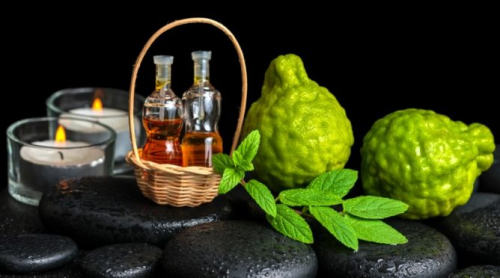
- Oils like sandalwood, chamomile, tea tree, chamomile, yarrow lily, honeysuckle, coriander, lime, lavender, neroli, peppermint, sandalwood, iris, or jasmine, birch, brahmi, champa, clary sage, fennel, geranium, jatamansi, lemon balm, lemongrass, mandarin, myrtle, neroli, peppermint, petitgrain, rose, sandalwood, spearmint, tangerine, tea tree, vanilla, wintergreen, yarrow, ylang ylang are good.
- Pittas are very visual, so it’s great to have real flowers on your desk or bedside table, or burn a candle scented naturally with these aromas.
Carrier oils for Pitta
Sunflower, jojoba, almond coconut and olive oil are ideal.
Oils for Kapha
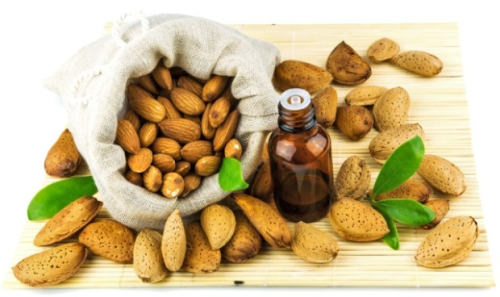
- Camphor, cardamom, saffron, juniper berry angelica, anise, bay, bergamot, birch, camphor, cardamom, cedarwood, cinnamon, clary sage, cypress, fir, frankincense, geranium, ginger, grapefruit, hyssop, jasmine, juniper. Lavender, lemon, lemongrass, lime, marjoram, neroli, myrrh, myrtle, petitgrain, peppermint, rose, sage, sweet orange, tea tree, wintergreen, yarrow oils are good for healing kapha.
- Kaphas can also benefit from pungent, stimulating scents like eucalyptus, cedar, pine, and sage, basil, clove, niaouli, hyssop, rosemary, savory.
- Peppermint is a stimulating odorant that increases motivation to perform physically.
Carrier oils
Mustard seed, almond and grape seed are ideal.
Essential Oils That All Doshas Can Use
Some scents offer aromatherapy benefits for every dosha. For instance, rosemary opens the mind and enhances memory (although, vatas should use it sparingly), while ginger oil is considered a universal treatment for soothing the effects of jet lag and other travel related sicknesses. Tea tree oil and saffron oil is also known to treat all three doshas disorders.
Dr. Vishnu B Chandran, BAMS
Private consultation, Kerala


